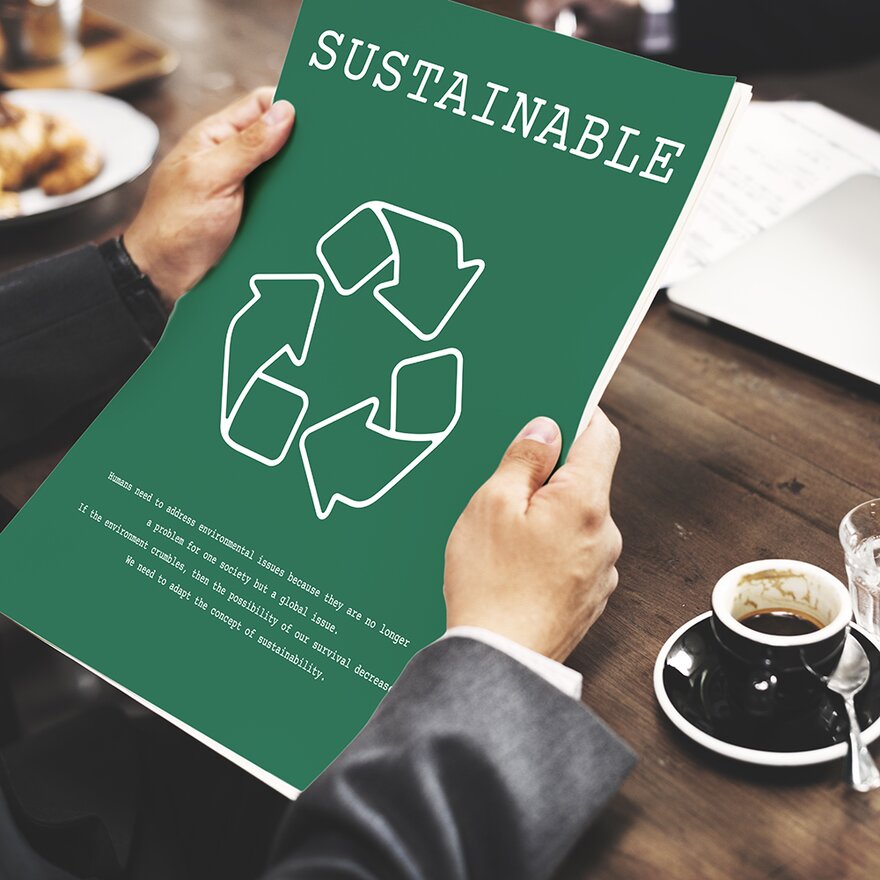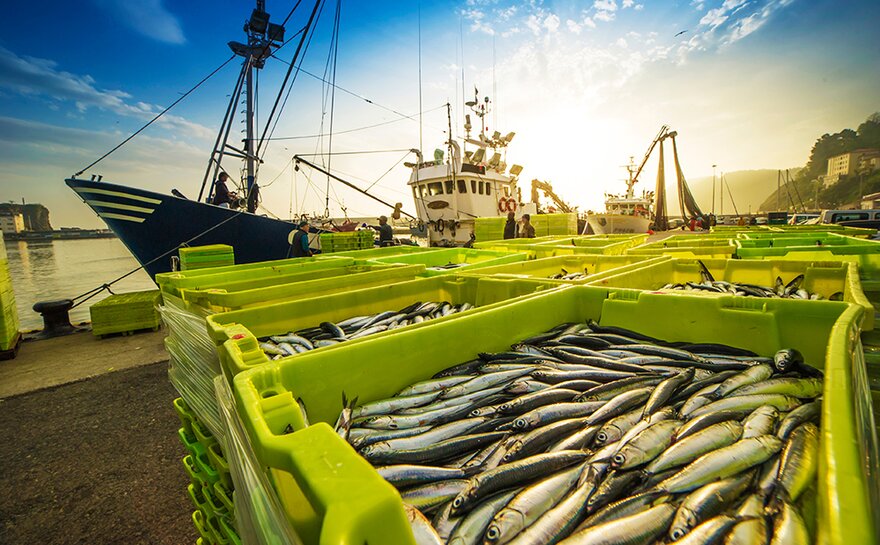Sustainability starts at the source, by choosing the right suppliers and green targets. Panellists at The Caterer's Sustainability Summit shared their expertise
When it comes to reaching environmental goals, no operator is an island. Experts at The Caterer's Sustainability Summit discussed how they're working with suppliers to trace the origin of ingredients, and share tips on how we can collectively make a difference.
Any journey into sustainable sourcing must begin with buy-in from the entire team. Peter Weeden, head of sustainability and chef-director at the Culpeper Family Hospitality Group, a group of four pubs in London, knows this first hand, as he is responsible for getting everyone on the same page across the business.
"Having an open conversation about where you are and where you're looking to go is key. I use the example of the Duke of Cambridge [in Islington in London] as a good starting point – it's the first organic pub in the UK and it's been running for almost 25 years,"says Weeden, speaking at the summit, which was sponsored by Alaska Seafood Marketing Institute, Compass Group UK & Ireland and Dynamify.
"The Duke set out guidelines and principles very early on in conjunction with the Soil Association – that all the ingredients in the kitchen would be organic, that it had an agreed and approved standard that was independently audited – which makes it easy to measure what we are doing," he said. "And you can very clearly communicate back to your staff and customers what your standards are because they're explicit."
"It's also useful to conduct a full audit of the menu, consumption and accounts to see where there are high volumes of meat and fish sales compared to vegetables, and gradually try to build up an understanding of what you're serving," he said. Asking suppliers about the source of ingredients is also crucial: "We have to question our assumptions a bit more and not just say ‘it's fine, we've been using them for ages'."
"Once you start to have a dialogue or discussion with your supplier, try and get a policy written down on what it is you want to serve. Have a set of criteria you want to stick to and just chip away very gently and take the whole team on board. This is the key part – this is all about a journey you have to take everyone on."
Creating sustainability strategies
Harinder Singh, head of sustainability at Foodbuy UK, the procurement division of Compass Group UK & Ireland, has recently implemented an extensive sustainability strategy across its supplier base – no mean feat for a company that works with thousands of suppliers.
For him that meant starting with a mission statement of what sustainability means. "The answer is we're trying to leverage £1.5b-worth of scale to make sure we can implement sustainable practices. That includes a series of actionable ambitions, such as decarbonising suppliers to deliver net zero emissions by 2030.
"Sustainability and procurement working together can really create a legacy," he said. "For me, the culture shift in food waste is so palpable and I'm really pleased to see commercial teams fully engaged with sustainability, having conversations with their supply partners, and considering it all through the procurement process."
Effective supply chain management is crucial. "Success in this space is largely down to having the right supplier partners who understand our targets, ambitions [and] initiatives."
Creating the strategy over the last 10 months has also made Singh appreciate the crucial role of data. "We're so heavily reliant on our supplier partners to keep us informed of any changes they are making in their supply chain, because data is at the heart of everything we're doing."
Maxwell Harding, founder and chief exeuctive of Dynamify, an omnichannel point of sale business, agreed this is a fundamental starting point: "Obviously we all know that what gets measured, gets improved. We know that when we track our weight on a scale or record how much we drink in any given month, we realise our consumption might be higher than we think it is."
For example, monitoring carbon labelling data has proved successful. "We found that where operators start using carbon labelling inside the Dynamify solution, they can reduce their carbon footprint within about 18 months by up to 25%. So, we're seeing some really interesting stats coming out where you can use monitoring and tracking and gamification to change consumer behaviour."
For Michelle Devlin, general manager at the Egerton House hotel in London and sustainability head for Red Carnation Hotels, a comprehensive plan from the outset is key to everything.
"Have a very detailed roadmap of what you want to do and have it focused in on particular subjects or items, because otherwise it can become quite a complicated mess. You need to have a very structured process of how you want to go about it," she said.
"We made sure we had procurement managers in place who understood the sustainability element of purchasing. Procurement in the past has always been about looking for products [with] the best value, whereas, actually the culture now is to make sure there is a sustainability element to that. Sustainability has as much a part in that decision-making process as the cost."
The group also set up a working committee of chefs across the collection to identify 15 top products that could be sourced locally, which has contributed to an increased use of more local products. For example, one of its properties now sources its dishes' main ingredients from within a 25-mile radius, and its property in Ireland uses ingredients from within the estate itself.
"The team went out and looked for different suppliers and suddenly these relationships started to appear around the different hotels, with suppliers coming on board. That not only provided us with an opportunity to have a great product on the plate appearing to our guests, but also to offer the story behind that product."
'We don't have a bin'
Given the complexity of supply chains, it can be difficult to know where to start when it comes to being more sustainable. Thankfully, those who have already embarked on this path have plenty of learnings to share.
Douglas McMaster, chef-owner of Silo in London, is a pioneer of zero waste. However, one of his tactics is fiendishly simple: "We don't have a bin. It seems like an odd thing for a restaurant to do. But the more I learn about waste and sustainability, the more I realise the bin is the thing that is odd in this scenario," he said. Instead, the restaurant has a circular approach to cooking where nothing is wasted.
He also uses invasive species, such as Japanese knotweed, on restaurant menus, borne out of an idea of wanting to raise awareness about the imbalance caused to ecosystems through overpopulation of non-native species. "We need to reinvest in the supply chains that feed us… Invasive species are one of those interferences in nature that humans have created," he said.
However, he cautions anyone taking this approach to do their homework first to avoid making the problem worse. "The three [invasive species] dinners we have done involved thousands of hours in research and development into getting those ingredients safely and responsibly. And we had to learn what is responsible, because no one is telling us how to do this… we're learning and trying to spread that knowledge."
For Devlin, one of the pitfalls to avoid is the potential greenwashing of products: "There are lots of products on the market now promoted as being sustainable," she said. "Before any long-term decisions are made operators should ask: ‘Where have the raw materials for that product come from? Have they come from responsible sourcing?'"
One example is checking that recyclable items can be appropriately handled. "There are some new products coming in that our waste contractors are not yet set up for."
For Harding, incomplete data can be a key setback. "I think it's quite frustrating for people if you're saying you offer, for example, carbon labelling but you only have it on a couple of your menu items or it's incorrect in terms of the value. So, if you're going do it, do it properly or don't bother."
His advice is to have scalable processes across all sites. "Have the right tools behind the scenes so that you have accurate data."
Unfortunately, for some, there still remains a mental barrier towards taking the first step to sustainable sourcing, especially as it can feel like a complicated area to navigate.
"The biggest pitfall is when we imagine that somebody else is going to deal with it. That we externalise the cost. That we externalise responsibility. We'll just put it onto the supplier or the customer," said Weeden.
"If we take responsibility and internalise those costs and think about ways to deal with problems as they arise, we're not kicking them down the road for people further on," he says. "It's about taking responsibility."
Alaska's sustainable seafood journey
When it comes to ensuring food is sustainably sourced, knowing the provenance of produce is key. In Alaska, the sustainability of its wild seafood is embedded into its way of life – it is the only state with sustainable fishing written into its constitution.
Alicia Parker, Northern Europe marketing representative at the Alaska Seafood Marketing Institute, a public-private partnership set up to promote the natural resource, said: "Because of Alaska's fisheries management practices, it has never had a species on the endangered species list, because it prioritises the needs of the ecosystem over the harvest," she says. In fact, it is illegal to farm fish in Alaska.
Fishing is the largest private sector employer, employing 60,000 people out of a population of 733,000. "Fishing families are part of the industry and are really important to protecting the future generation of stocks," she says.
"Fisherman are really sustainable stewards and know they must sometimes put aside their short-term gains for the long-term health of the resource. They are committed to obeying strict laws, making sure to use careful harvest methods, accurate reporting and also adhering to scientific data to protect the fish and their livelihoods."
Once the fish is caught, the intention is to use 100% of it to minimise waste. For example, the skin and oil are used in beauty products, and the bones are used in pet food and fertiliser.
Anyone looking to purchase Alaskan-sourced fish can verify the origin by checking the certification is from Alaska Responsible Fisheries Management (RFM)and the Marine Stewardship Council to ensure supply chain traceability. "Now more than ever provenance is becoming really important and people are caring about the origin of their product," said Parker.











